Lakeview, Oregon, nestles at the foot of Black Cap, a promontory of the Warner Mountains in south central Oregon, its shoulders soft with sagebrush in grey abundance like a lawn spread out beside its door. Here the pioneers from the East laid out streets in an orderly grid where there had been gullies, houses where there had been boulders, stores where antelope and rabbits once nibbled on the dry vegetation.
The ranchers from Ireland and the sheepherders from the Basque country (that’s right), are still here, but now hang gliders soar from Black Cap’s top and bio-fuel producers seek to fill the gap left when the logging operations shrank from five mills down to one. Yes, there are gliders soaring in the picture here, playing with the raptors.
Lake County is larger than the state of Massachusetts, yet it has a population of less than 8,000 people, about one per square mile. With more cattle and sheep than people, it continues to be ranching country, but before the ranchers came, people lived here for some ten thousand or more years, leaving their inscriptions on the igneous cliffs and boulders, their sandals and pots in the caves that dot the region. The Northern Paiute are their descendants.
Though one of Sylvia’s classmates found some of these sandals over fifty years ago, she had never visited the petroglyphs scratched into the rimfall boulders of the area, so we drove out to the Greaser Boulder, which is just past Adel on the way to Winnemucca, Nevada (I love to say “Winnemucca,” which advertises itself as the city of paved streets). Another excursion took us to Petroglyph Lake on the Hart Mountain Antelope Refuge east of the crossroads of Plush (I like to say “Plush,” too.) The rattlesnakes didn’t bother us as we made our way around the rockfall and boulders, puzzling over the meaning of these circles, spirals, lizards, and
wavy lines. Maybe they were just the “Kilroy was here” of ancient peoples. Maybe they were ways to tell of wild game and water. We don’t know. They are simply a door to the past we cannot fathom, an invitation to a world of spirits speaking in another tongue.
Everywhere lie testimonies to the land’s volcanic past. Ash from Mt. Mazama can be found in subtle layers underneath the surface soil. Black basalt forms cliffs where uplift forced by the Pacific plate relentlessly extrudes the mantle far below. Sometimes the rocks provide a map of eons of volcanic process, as does this cliff north of Lakeview near Summer Lake. Other times, this volcanic power is present simply as the faithful geyser on the north side of town, part of an underground system that provides heat to some of Lakeview’s buildings, and, some people hope, electrical production.
We came to Lakeview once again because it was here that my wife was formed into young womanhood. Whether in the school, the church, the swimming pool, the explorations of the boundless hills, or the beloved snack shop, News and Sweets, where she bought her Seventeens and read them with the passion of a devotee, her life was shaped in ways my Eastern eyes might never understand. Here, you can see beyond your grasp and so you always hunger for more. You learn to be content within a boundless world. Here you have to live as if it all depended on you alone, for there can be times that no one can be seen within a dozen miles. Here you learn to bend with all extreme diversities to live, survive, and prosper, often in hidden ways. Here is desert, a different kind of plenty, of beauty, and of grandeur. Here the bare bones of the earth’s anatomy are open for all to see. This land gave her an aesthetic of spare discernment, a clarity of color you can almost smell, and a willingness to experiment with plastic form and patient spaciousness.
And how did she take this personhood so far away? It was because of a man named Bernard Daly, a doctor and entrepreneur in Lakeview at the turn of the century. After helping rebuild Lakeview in the wake of its devastation by fire in 1901, he had the vision to bequeath his estate to a fund to educate its young people by sending them to any state college or university in Oregon. Sylvia was a Daly scholar, which propelled her into the wider world. Though she moved many miles away, many scholars come back, as
Daly hoped they would, making Lake County one of the best educated counties in the US. So, Dr. Daly, you have my gratitude and the
thanks of thousands of others.
This means that Lake County has very educated cowboys and ranchers! But they still can ride. And fly. A little trip from the local landing strip to the opera in San Francisco is not unusual, they tell me. They celebrate the Fourth of July here with a rodeo, starting with “mutton busters” —little kids who ride the sheep out of a pen rodeo style until the sheep
shake them off and return to the flock, wondering why little Jack was trying to get on their back. The young men, with spurs, fancy belt buckles, and hats, hang on to bulls and even tame some broncos as they lunge out of the gates. That this is dangerous fun is not lost on anyone, but it remains a rite of passage for many a young cowboy.
Oh, and about Plush. Northeast of Lakeview, Plush is the general store, a few homes and a church, at the center of miles of ranches. To the north lie the digs where amateurs and real prospectors unearth sunstones for the jewelry trade. The store in Plush has souvenir dollar bills on the ceiling, gas and diesel at the pumps, and the best hamburgers you’ll find anywhere. They know their beef. And, if you have the time, there’s friendly chatter to fill up the space you’ve breathed outside all day.
Despite the region’s sturdy traditions and education, economic forces of globalized commerce have drained the local stores in Lakeview of their former sparkle. FedEx and UPS have bypassed them. A ninety-minute drive to Klamath Falls to the west attracts the window shoppers. And Lakeview, like so many small towns that have created American culture, struggles to re-invent itself, find new economic boots, and maintain the self-reliant imagination that put a town in the midst of sagebrush, alkali lakes, antelopes and towering pines. My hat, such as it is, is off to them.

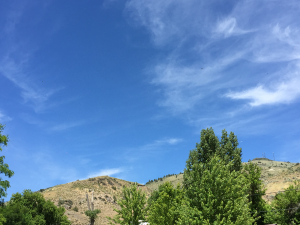
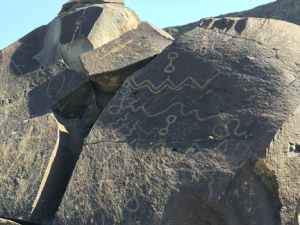
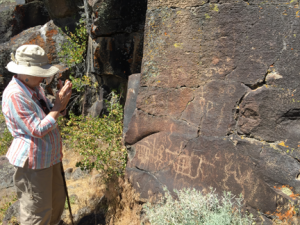
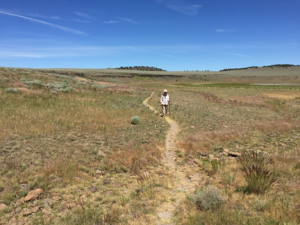
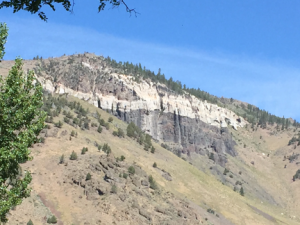
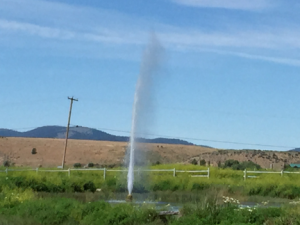
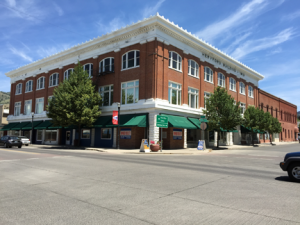
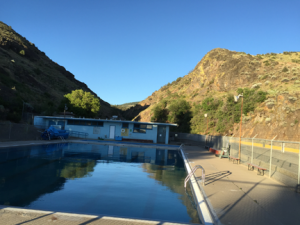
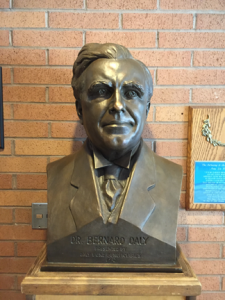
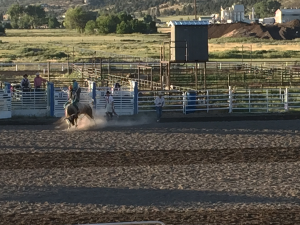



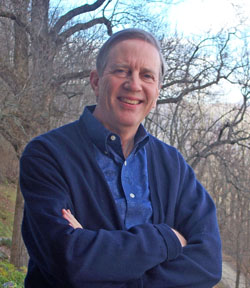
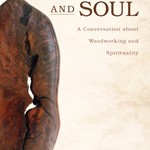

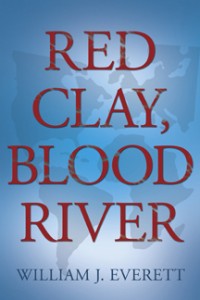 Red Clay, Blood River
Red Clay, Blood River
Very nice, with words and pictures. And Sylvia—to know now where and somewhat how you have been influenced by all that natural art. !! … ANITA GOWER FOSTER.